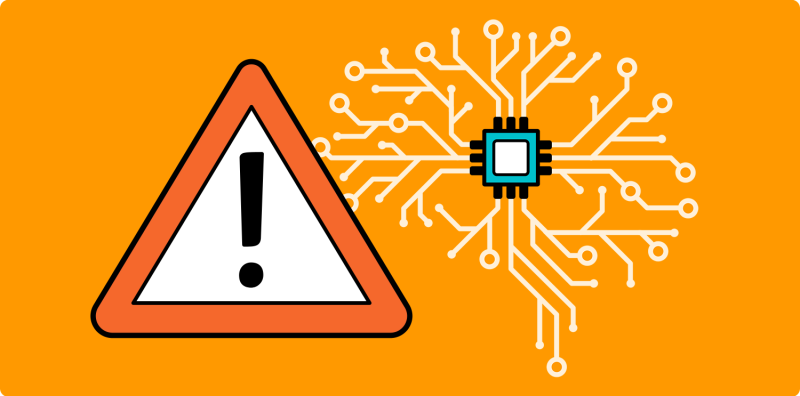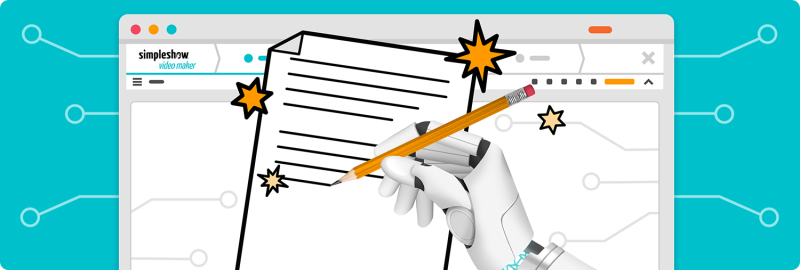Dangers of Generative AI – why some companies are banning it

In this article, we want to focus on understanding and managing the risks of generative AI for businesses. From legal and regulatory issues to loss of control over generated content to ethical concerns and unreliable results, organizations need to consider several aspects when using generative AI tools and services in their business operations. By understanding these risks, we can make informed decisions and take appropriate action to address potential challenges.

The possibilities of Generative AI for companies are enormous.
Generative AI can be used to automate the creation of content such as text, video, images, or music. This enables organizations to create large amounts of high-quality content in less time, which can be particularly beneficial in areas such as content marketing, e-commerce, or social media.
Generative AI enables companies to offer personalized products and services. Based on customer preferences, behavioral data, and other relevant information, AI can generate personalized recommendations, offers, or customized products to improve the customer experience and increase customer loyalty.
Generative AI analyzes and derive insights from large volumes of data. Organizations can train AI models to identify patterns, trends, and correlations in data and predict future developments. This supports strategic decision-making and enables data-driven business planning.
Generative AI can be used in chatbots and virtual assistants to improve customer service and enable more efficient customer interactions. By combining natural language processing and generative AI, chatbots can understand complex customer queries and generate relevant responses, resulting in faster response times and higher customer satisfaction.
Generative AI can be used for automated quality assurance in production. It can monitor production processes, detect deviations from quality standards, and identify potential defects early on. This helps improve product quality, reduce waste, and increase efficiency.

How companies can manage the risks of generative AI.
Legal and regulatory risks: Generative AI may raise legal and regulatory issues. Data security, privacy, liability, and compliance issues may arise. Specific legal regulations are not yet in place, which may change rapidly.
Organizations must ensure they comply with all relevant laws and regulations and assess the potential risks of using AI-based systems. This requires thorough research and keeping up to date with developments in the relevant regulatory framework.
Loss of control over generated content: Generative AI models may generate content that does not meet the organization’s expectations or standards. There is a risk that inaccurate or inappropriate content will be generated, damaging the company’s reputation or resulting in legal consequences.
Organizations must ensure that they have sufficient control mechanisms to review and adjust the quality and appropriateness of the content generated. Incorporating human reviewers or moderators into the content generation process can be a valuable control mechanism. Human reviewers can review and verify the output of AI models to ensure accuracy, relevance, and alignment with organizational standards.
Ethical concerns: Generative AI can raise ethical issues, particularly related to bias, discrimination, or manipulative practices. AI models learn from data and may reinforce existing biases or inequalities in the data.
Organizations need to ensure that they have ethical policies and procedures in place to ensure that generative AI is used responsibly and does not negatively impact users, customers, or society. They should regularly evaluate the output of their AI models to assess potential bias or discriminatory patterns.
Unreliable results: Generative AI models are not error-free and may produce unpredictable or unreliable results. There is a risk that generated content may need to be more accurate, consistent, or simply unusable.
Once generative AI technology is in use, organizations should establish robust monitoring processes to continuously evaluate the performance and reliability of the models. They can monitor AI-generated content for accuracy, consistency, and adherence to quality standards.
Dependence on external service providers: Many organizations deploy generative AI systems via APIs or third-party services. This can create a dependency on external service providers whose availability, quality, and security are only sometimes guaranteed.
Organizations should look for service providers that adhere to industry standards and promote interoperability. When providers use standardized APIs, data formats, or protocols, it is easier to switch between providers or seamlessly integrate alternative solutions.
These risks have led some companies to decide against using generative AI. Concerns about legal issues, loss of control over content, ethical issues, and unreliable results are understandable and require careful consideration. But does this mean that companies must entirely forgo the benefits and opportunities that generative AI can offer? Not necessarily. When the right steps and proper precautions are taken, the benefits of generative AI can highly ouweight the risks.
When simpleshow developed an automated script writing feature using generative AI, the Story Generator, careful consideration was given to mitigating risks and creating a safe and secure environment for business users to create professional explainer videos instantly.

Legal and regulatory issues
Loss of control over generated content / unreliable results
Ethical concerns
Dependence on external service providers
Compliance and adherence to simpleshow’s high information security standards.
The Story Generator was specially developed for the creation of explainer video scripts. It can’t be used for other purposes.
Human in the loop (HITL): You can review and edit all automatically generated scripts to correct potential errors or biases in the AI models.
No AI training with user input to avoid inadvertently influencing or reinforcing biases.
Protected content through automated moderation to filter inappropriate or problematic content.
simpleshow has full control over the security and confidentiality of user input
No personal data is transmitted via the OpenAI API.
Input is securely transmitted via the OpenAI API, stored for abuse detection for up to 30 days, and then deleted.
